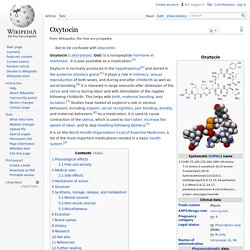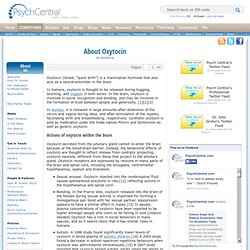

Forget Survival of the Fittest: It Is Kindness That Counts. Why do people do good things?

Is kindness hardwired into the brain, or does this tendency arise via experience? Dacher Keltner, director of the Social Interaction Laboratory at the University of California, Berkeley, investigates these questions from multiple angles and often generates results that are both surprising and challenging. In his recent book, Born to Be Good: The Science of a Meaningful Life (W. W. Norton, 2009), Keltner weaves together scientific findings with personal narrative to uncover human emotion’s innate power to connect people with one another, which he argues is the path to living the good life. SCIENTIFIC AMERICAN MIND: What, in a nutshell, does the term “born to be good” mean to you?
MIND: One of the structures in our body that seems especially adapted to promote altruism is the vagus nerve, as your team at U.C. KELTNER: The vagus nerve is a bundle of nerves that originates in the top of the spinal cord. Greater Good Science Center. The Greater Good Science Center, located at the University of California, Berkeley is an interdisciplinary research center devoted to the scientific understanding of individual happiness, compassion, strong social bonding, and altruistic behavior.

The center was started in 2001 and serves to conduct research, and to translate and disseminate research for the general public. The center publishes the online magazine Greater Good. History[edit] The center at the University of California, Berkeley was started in 2001 as an interdisciplinary research center. By studying individuals and their relationships, the center aims to promote well-being in society as a whole. Print magazine[edit] Dacher Keltner. Dacher Keltner is a professor of psychology at University of California, Berkeley, and Director of the Greater Good Science Center, formerly known as the Center for the Development of Peace and Well-Being.

Professor Keltner received his B.A. in Psychology and Sociology from the University of California, Santa Barbara and his Ph.D. from Stanford University, and he completed three years of post-doctoral work with Paul Ekman at the University of California, San Francisco. He is the author of more than 140 scholarly articles and several books. Current research in his Berkeley Social Interaction Laboratory focuses on prosocial behavior, compassion, power and moral reasoning, social class, and collective emotions. Greater Good Science Center[edit] The Greater Good Science Center publishes an online magazine called Greater Good. Books[edit] Forget Survival of the Fittest: It Is Kindness That Counts. Greater Good Science Center. Dacher Keltner.
Oxytocin. Oxytocin (/ˌɒksɨˈtoʊsɪn/; Oxt) is a mammalian neurohypophysial hormone.

Produced by the hypothalamus and stored and secreted by the posterior pituitary gland, oxytocin acts primarily as a neuromodulator in the brain. Oxytocin plays an important role in the neuroanatomy of intimacy, specifically in sexual reproduction of both sexes, in particular during and after childbirth; its name comes from Greek ὀξύς, oksys "swift" and τόκος, tokos "birth. " It is released in large amounts after distension of the cervix and uterus during labor, facilitating birth, maternal bonding, and, after stimulation of the nipples, lactation. Both childbirth and milk ejection result from positive feedback mechanisms.[3] Recent studies have begun to investigate oxytocin's role in various behaviors, including orgasm, social recognition, pair bonding, anxiety, and maternal behaviors.[4] For this reason, it is sometimes referred to as the "bonding hormone". Medical uses[edit] Side effects[edit] About Oxytocin. Oxytocin (Greek, “quick birth”) is a mammalian hormone that also acts as a neurotransmitter in the brain.

In humans, oxytocin is thought to be released during hugging, touching, and orgasm in both sexes. In the brain, oxytocin is involved in social recognition and bonding, and may be involved in the formation of trust between people and generosity. [1][2][3] In women, it is released in large amounts after distension of the cervix and vagina during labor, and after stimulation of the nipples, facilitating birth and breastfeeding, respectively. Synthetic oxytocin is sold as medication under the trade names Pitocin and Syntocinon as well as generic oxytocin. Actions of oxytocin within the brain Oxytocin secreted from the pituitary gland cannot re-enter the brain because of the blood-brain barrier. Sexual arousal. Peripheral (hormonal) actions of oxytocin The actions of oxytocin are mediated by specific, high affinity oxytocin receptors. APA Reference , W. (2008).